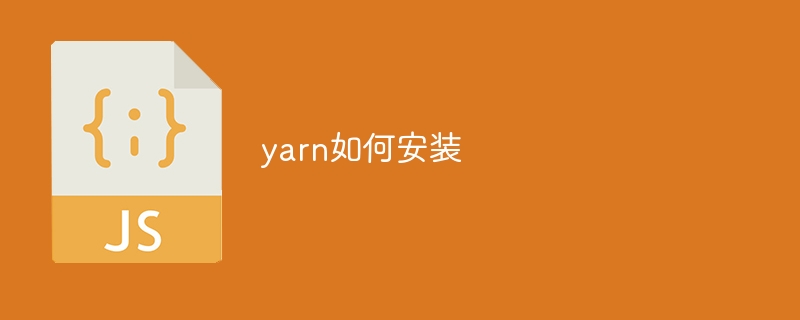Home >Web Front-end >JS Tutorial >How to install yarn in the system
How to install yarn in the system
- WBOYWBOYWBOYWBOYWBOYWBOYWBOYWBOYWBOYWBOYWBOYWBOYWBOriginal
- 2024-02-25 20:48:071413browse

How to install Yarn requires specific code examples
With the development of modern web development, JavaScript is used more and more widely. To facilitate the management and building of JavaScript projects, package management tools like NPM (Node.js Package Manager) are very popular. However, despite NPM's many powerful features, it still has some issues with speed and security.
Yarn is a new generation of JavaScript package management tool developed by Facebook, aiming to solve some problems of NPM. Yarn features faster installation, more consistent dependency resolution, better version control, and safer operations. Next, we will detail how to install Yarn and provide specific code examples.
First, make sure you have Node.js installed. You can download and install the version suitable for your operating system from the official Node.js website (https://nodejs.org/).
After installing Node.js, we can start installing Yarn. The following are the specific installation steps:
Step 1: Open the terminal (Windows users can open the command prompt or PowerShell) and enter the following command to verify the installation of Node.js:
node -v
If successful The version number of Node.js is displayed, indicating that Node.js has been successfully installed.
Step 2: Use the following command to install Yarn’s package manager:
npm install -g yarn
This command will install Yarn as a global package, so you can use it in any directory Yarn command.
Step 3: After the installation is complete, you can use the following command to verify the installation of Yarn:
yarn -v
If the Yarn version number is successfully displayed, it means Yarn has been successfully installed.
Now, you have successfully installed Yarn. Let’s learn about some commonly used Yarn commands and operations.
- Initialize a new project
Open the terminal in the project directory and enter the following command:
yarn init
Then follow the prompts to perform a series of configurations, including Project name, version number, description and other information. Finally, a package.json file will be generated, which contains basic information about the project.
- Add a dependency package
Use the following command to add a dependency package:
yarn add [package]
For example, to add a dependency package named "axios" , you can use the following command:
yarn add axios
This will install the latest version of the axios package and add it to the project's dependency list.
- Remove a dependent package
Use the following command to remove a dependent package:
yarn remove [package]
For example, to remove the package named "axios" For dependent packages, you can use the following command:
yarn remove axios
- Upgrade dependent package
Use the following command to upgrade a dependent package:
yarn upgrade [package]
For example, to upgrade For the dependent package named "axios", you can use the following command:
yarn upgrade axios
The above are some common commands and operations of Yarn. With Yarn, we can manage the dependencies of JavaScript projects faster and more securely. I hope the introduction in this article will be helpful for you to understand and use Yarn. Now, you can start using Yarn to manage and build your JavaScript projects.
The above is the detailed content of How to install yarn in the system. For more information, please follow other related articles on the PHP Chinese website!

